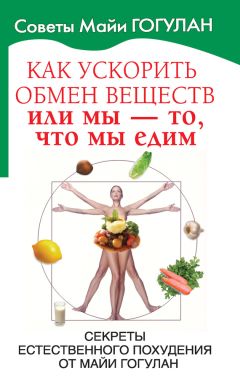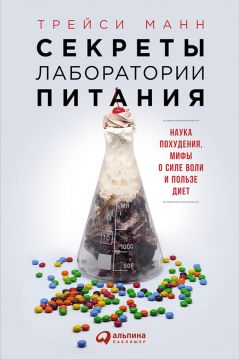3. D. Neal, W. Wood, and J. Quinn, “Habits — A Repeat Performance”, Current Directions in Psychological Science 15, no. 4 (2006): 198-202; Judith A. Ouellette and Wendy Wood, “Habit and Intention in Everyday Life: The Multiple Processes by Which Past Behavior Predicts Future Behavior”, Psychological Bulletin 124, no. 1 (1998): 54-74, doi: 10.1037//0033-2909.124.1.54; Wendy Wood and David T. Neal, “A New Look at Habits and the Habit-Goal Interface”, Psychological Review 114, no. 4 (October 2007): 843-63, doi:10.1037/0033-295X.114.4.843.
4. Я значительно упрощаю информацию, полученную из большого объема исследовательской литературы, посвященной сравнению автоматического и контролируемого поведения. Интересный обзор можно найти в работе: J. A. Bargh and М. J. Ferguson, “Beyond Behaviorism: On the Automaticity of Higher Mental Processes”, Psychological Bulletin 126, no. 6 (November 2000): 925-45.
5. Joanna Robertson, “The Pampered Pooches of Paris”, BBC, 2011, http://www.bbc.co.uk/news/magazine-16268890.
6. В этой обстоятельной статье описываются десятки исследований, доказавших, что наши намерения редко совпадают с реальным поведением: Thomas L. Webb and Paschal Sheeran, “Does Changing Behavioral Intentions Engender Behavior Change? A Meta-Analysis of the Experimental Evidence”, Psychological Bulletin 132, no. 2 (March 2006) : 249-68, doi:10.1037/0033-2909.132.2.249.
7. Phillippa Lally et al., “How Are Habits Formed: Modelling Habit Formation in the Real World”, European Journal of Social Psychology 40, no. 6 (October 16, 2010): 998-1009, doi:10.1002/ejsp.674.
8. Heather Barry Kappes and Gabriele Oettingen, “Positive Fantasies about Idealized Futures Sap Energy”, Journal of Experimental Social Psychology 47, no. 4 (July 2011): 719-29, doi:10.1016/j.jesp.2011.02.003.
9. Если сравнивать с теми, кому удалось визуализировать достигнутое. Shelley Е. Taylor et al., “Harnessing the Imagination: Mental Simulation, Self-Regulation, and Coping”, American Psychologist 53, no. 4 (1998): 429-39.
10. Доказательство того, что существующая модель поведения может стать основой для новых привычек, см. в работе: Stef Р. J. Kremers, Klazine van der Horst, and Johannes Brug, “Adolescent Screen-Viewing Behaviour Is Associated with Consumption of Sugar-Sweetened Beverages: The Role of Habit Strength and Perceived Parental Norms”, Appetite 48, no. 3 (May 2007): 345-50, doi:10.1016/j. appet.2006.10.002; Judith A Ouellette and Wendy Wood, “Habit and Intention in Everyday Life: The Multiple Processes by Which Past Behavior Predicts Future Behavior”, Psychological Bulletin 124, no. 1 (1998): 54-74; Glenn J. Wagner and Gery W. Ryan, “Relationship between Routinization of Daily Behaviors and Medication Adherence in HIV-Positive Drug Users”, AIDS Patient Care and STDs 18, no. 7 (July 2004): 385-93, doi: 10.1089/1087291041518238.
11. M. Ji and W. Wood, “Purchase and Consumption Habits: Not Necessarily What You Intend”, Journal of Consumer Psychology 17, no. 4 (October 2007) : 261-76, doi:10.1016/S1057-7408(07)70037-2.
12. В связи с выработкой привычки делать физические упражнения об этом упоминается в работе: Wendy Wood, Leona Tam, and Melissa Guerrero Witt, “Changing Circumstances, Disrupting Habits”, Journal of Personality and Social Psychology 88, no. 6 (2005): 918-33. В работе рассказывается, как та же идея способствует появлению привычки выбирать экологичные способы перемещения: Bas Verplanken et al., “Context Change and Travel Mode Choice: Combining the Habit Discontinuity and Self-Activation Hypotheses”, Journal of Environmental Psychology 28, no. 2 (June 2008): 121-27, doi:10.1016/j.jenvp.2007.10.005. До конца не выяснено, действует ли этот принцип в сфере питания, согласно работе: Johannes Brug et al., “Environmental Determinants of Healthy Eating: In Need of Theory and Evidence”, Proceedings of the Nutrition Society 67, no. 3 (August 1, 2008): 307-16, doi: 10.1017/S0029665108008616.
13. Jayne Hurley and Bonnie Liebman, “Big: Movie Theaters Fill Buckets... and Bellies”, Nutrition Action Health Letter, December 2009.
14. David T. Neal et al., “The Pull of the Past: When Do Habits Persist Despite Conflict with Motives?”, Personality & Social Psychology Bulletin 37, no. 11 (November 1, 2011): 1428-37, doi:10.1177/0146167211419863.
15. He рекомендую этого делать — в кинотеатрах не оценят.
16. Bas Verplanken and Wendy Wood, “Interventions to Break and Create Consumer Habits”, Journal of Public Policy & Marketing 25, no. 1 (2006): 90-103.
17. Wood, Tam, and Witt, “Changing Circumstances, Disrupting Habits”.
18. He то чтобы я призывала вас в отпуске питаться исключительно полезно. Скорее, это можно объяснить тем, что сейчас я нахожусь в Париже, где позволяю себе гораздо больше пирожных, чем обычно.
19. Peter М. Gollwitzer, “Implementation Intentions: Strong Effects of Simple Plans”, American Psychologist 54, no. 7 (1999): 493-503.
20. Доказательства см. в обзорной статье: Peter М. Gollwitzer and Paschal Sheeran, “Implementation Intentions and Goal Achievement: A Meta-Analysis of Effects and Processes”, Advances in Experimental Social Psychology 38 (2006): 69-119, doi: 10.1016/S0065-2601 (06)38002-1. Хорошие примеры можно найти в работе: Peter М. Gollwitzer and Veronika Brandstätter, “Implementation Intentions and Effective Goal Pursuit”, Journal of Personality and Social Psychology 73, no. 1 (1997): 186-99.
21. Marieke A. Adriaanse et al., “Do Implementation Intentions Help to Eat a Healthy Diet? A Systematic Review and Meta-Analysis of the Empirical Evidence”, Appetite 56, no. 1 (February 2011): 183-93, doi:10.1016/j. appet.2010.10.012.
22. Bas Verplanken and Suzanne Faes, “Good Intentions, Bad Habits, and Effects of Forming Implementation Intentions on Healthy Eating”, European Journal of Social Psychology 29, no. 5-6 (August 1999): 591-604, doi: 10.1002/(SICI) 1099-0992(199908/09)29:5/6<591::AID-EJSP948>3.0.CO;2-H.
23. Вывод взят из работы: Gollwitzer, “Implementation Intentions”. Доказательства того, что осуществимые намерения помогают противостоять отвлекающим факторам, см.: Ute С. Bayer et al., “Responding to Subliminal Cues: Do If-Then Plans Facilitate Action Preparation and Initiation Without Conscious Intent?”, Social Cognition 27, no. 2 (April 21, 2009): 183-201, doi:10.1521/soco.2009.27.2.183.
24. Подтверждение тому, что осуществимые намерения помогают не упустить и использовать возможность достичь цели, есть в работе: Gollwitzer and Sheeran, “Implementation Intentions and Goal Achievement”.
25. Janine Chapman, Christopher J. Armitage, and Paul Norman, “Comparing Implementation Intention Interventions in Relation to Young Adults’ Intake of Fruit and Vegetables”, Psychology & Health 24, no. 3 (March 2009): 317-32, doi: 10.1080/08870440701864538.
26. Marieke A. Adriaanse et al., “Planning What Not to Eat: Ironic Effects of Implementation Intentions Negating Unhealthy Habits”, Personality & Social Psychology Bulletin 37, no. 1 (January 1, 2011): 69-81, doi: 10.1177/0146167210390523.
27. Adriaanse et al., “Do Implementation Intentions Help to Eat a Healthy Diet?”.
28. Данный эксперимент Шарлотта Винкерс упоминает в своей диссертации, на защите которой я присутствовала и от прослушивания которой получила огромное удовольствие. Происходило это в Утрехте (Нидерланды). Charlotte Vinkers, “Future-Oriented Self-Regulation in Eating Behavior” (diss., University of Utrecht, 2013).
29. Данный пример упоминается в статье: Molly J. Crockett et al., “Restricting Temptations: Neural Mechanisms of Precommitment”, Neuron 79, no. 2 (2013): 391-401.
30. D. Ariely and K. Wertenbroch, “Procrastination, Deadlines, and Performance: Self-Control by Precommitment”, Psychological Science 13, no. 3 (May 1, 2002): 219-24, doi:10.1111/1467-9280.00441.
31. Yaacov Trope and Ayelet Fishbach, “Counteractive Self-Control in Overcoming Temptation”, Journal of Personality and Social Psychology 79, no. 4 (2000): 493-506. См. также: Xavier Gine, Dean Karlan, and Jonathan Zinman, “Put Your Money Where Your Butt Is: A Commitment Contract for Smoking Cessation”, American Economic Journal: Applied Economics 2, no. 4 (2010): 213-35.
32. Janet Schwartz et al., “Healthier by Precommitment”, Psychological Science 25 (January 3,2014): 538-46, doi: 10.1177/0956797613510950.
33. George Loewenstein, “Out of Control: Visceral Influences on Behavior”, Organizational Behavior and Human Decision Processes 65, no. 3 (March 1996): 272-92, doi:10.1006/obhd.l996.0028; Loran F. Nordgren, Frenk van Harreveld, and Joop van der Pligt, “The Restraint Bias: How the Illusion of Self-Restraint Promotes Impulsive Behavior”, Psychological Science 20, no. 12 (December 1, 2009): 1523-28, doi:10.1111/j.l467-9280.2009.02468.x.
ГЛАВА 10. КАК УСПОКОИТЬ АСТРОНАВТА
1. Доказательства, опубликованные NASA, см. в работе: Michele Perchonok and Grace Douglas, “Risk Factor of Inadequate Food System”, in “Human Health Performance Risks of Space Exploration Missions: Evidence Reviewed by the NASA Human Research Program”, ed. Jancy C. McPhee and John B. Charles (Houston: NASA, 2009), 295-316.
2. Charles T. Bourland and Gregory L. Vogt, “The Astronaut’s Cookbook: Tales, Recipes, and More” (New York: Springer International, 2009).
3. B. J. Caldwell et al., “Fluid Shift to the Upper Body Reduces Nasal Cavity Dimension and Airflow in Head-Down Bed Rest Subjects”, in “NASA Human Research Program Investigators’ Workshop” (Houston, 2012).
4. Barb Stuckey, “Taste: Surprising Stories and Science About why Food Tastes Good” (New York: Simon & Schuster, 2012).
5. Perchonok and Douglas, “Risk Factor of Inadequate Food System”.
6. См., например: D. J. Wallis and M. M. Hetherington, “Emotions and Eating. Self-Reported and Experimentally Induced Changes in Food Intake under Stress”, Appetite 52, no. 2 (April 2009): 355-62, doi:10.1016/j.appet.2008.11.007. См. обзорную статью: C. Greeno and R. Wing, “Stress-Induced Eating”, Psychological Bulletin 115 (1994): 444.
7. J. McPhee and J. Charles, eds., Human Health Performance Risks of Space Exploration Missions: Evidence Reviewed by the NASA Human Research Program (Houston: NASA, 2009).
8. Этими коллегами были Джо Редден, Зата Викерс, а также аспиранты Хизер Вагнер, Рейчел Бернс и Кэти Осдоба и менеджер лаборатории Бритт Альстром.
9. В действительности никто никогда не проводил эксперименты так, как нам представлялось верным: никто не подбирал успокаивающий продукт персонально для каждого испытуемого, но существует одно довольно скрупулезное исследование воздействия шоколада на настроение людей: Michael Macht and Jochen Mueller, “Immediate Effects of Chocolate on Experimentally Induced Mood States”, Appetite 49, no. 3 (November 2007): 667-74, doi:10.1016/j. appet.2007.05.004.
10. Вот насколько сильно мы верили в то, что успокаивающие продукты улучшают настроение.
11. В том, что все продукты были найдены, заслуга исключительно Бритт Альстром, менеджера моей лаборатории.
12. Результаты четырех экспериментов по воздействию успокаивающих продуктов на настроение человека, которые описываются в этой главе, опубликованы в работе: Heather Wagner et al., “The Myth of Comfort Food”, Health Psychology (2014).
13. Те из вас, кто занимается методологией исследований, могут задаться вопросом, а не улучшили ли мы настроение испытуемых настолько, что эффект от потребления успокаивающих продуктов не мог превзойти действие обычных продуктов (это называется «эффектом потолка»). Это не тот случай, что наиболее заметно по четвертому эксперименту.
14. Не исключено, что потребление шоколада способствует улучшению настроения на длительный период, но не сразу, как мы того ожидаем от успокаивающих продуктов, а позже. Для ознакомления с обзорной статьей см.: Andrew Scholey and Lauren Owen, “Effects of Chocolate on Cognitive Function and Mood: A Systematic Review”, Nutrition Reviews 71, no. 10 (October 2013): 665-81, doi:10.1111/ nure.12065.
15. Wagner et al., “The Myth of Comfort Food”.





